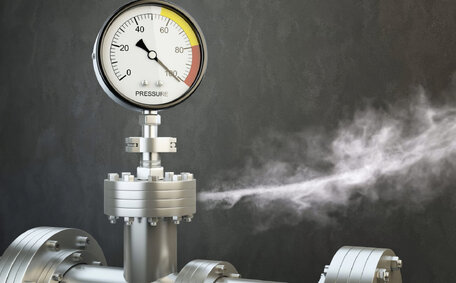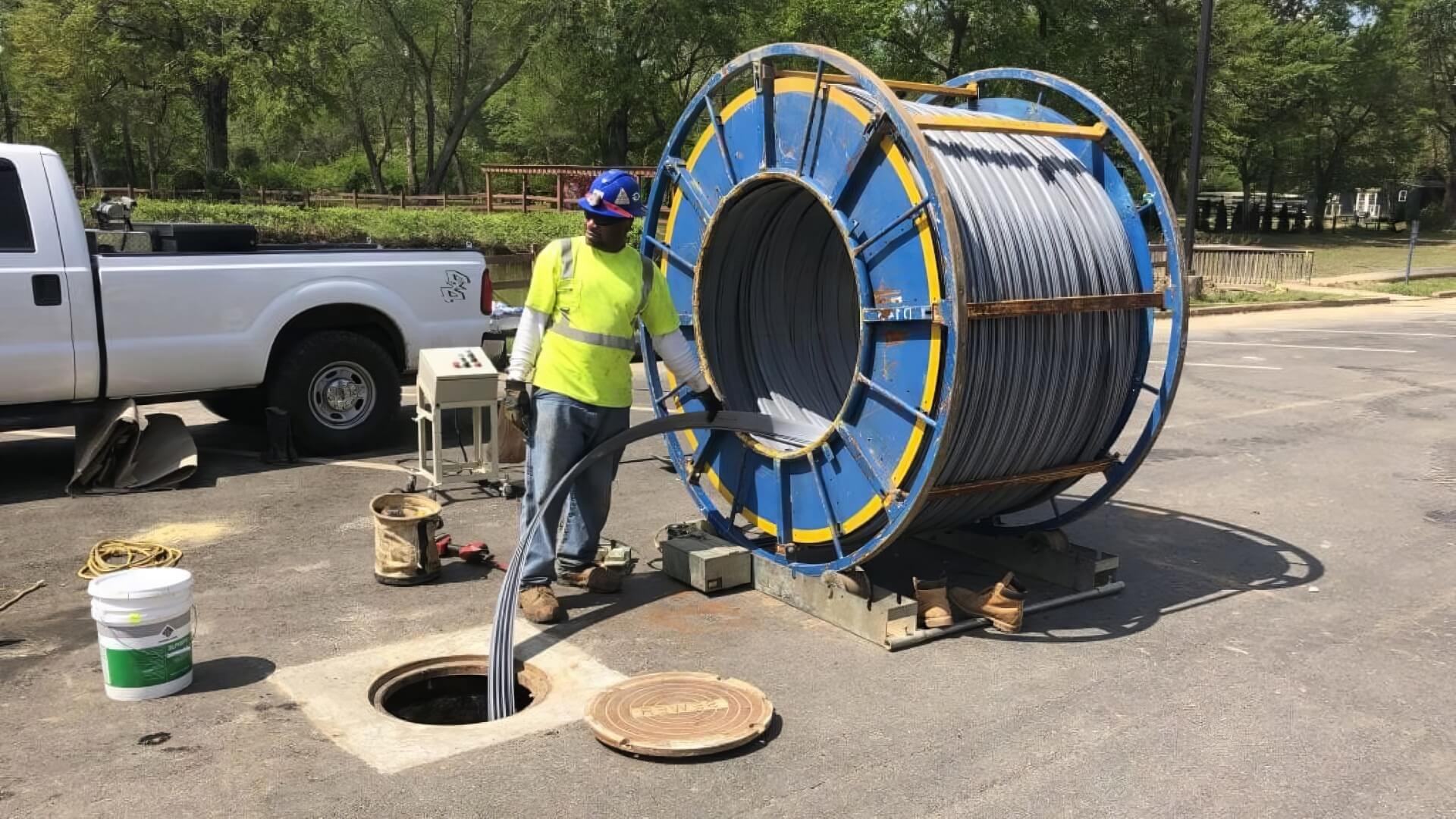Introduction to Pipe Relining
Pipe relining is a trenchless method for repairing damaged pipes without having to dig them up. It involves inserting a resin-impregnated liner into the existing pipe and curing it to form a new, jointless pipe within the old one. Relining is much less disruptive, faster, and more cost-effective than traditional pipe replacement.
One key factor in determining if a pipe can be relined is its minimum diameter. One key factor in determining if a pipe can be relined is its minimum diameter. It covers assessing if a pipe meets the minimum diameter requirements, understanding how relining impacts the final diameter, and the different size capabilities of various relining methods.
By understanding the ins and outs of pipe diameters and relining, you can determine if it is the right repair solution for your situation. We’ll also address common questions about how relining fits small pipes and its overall advantages compared to replacement.
Pipe Diameters Commonly Used in Plumbing Systems
Plumbing systems use a range of different pipe diameters depending on the application and required flow capacity. In residential buildings, some of the most common pipe sizes are:
- 40mm - Used for basin, laundry and toilet waste pipes
- 50mm - Used for kitchen and bathroom waste pipes
- 65mm - Standard diameter for main house drain lines
- 100mm - Typical size for sewer lines leaving the property
Commercial plumbing systems require larger pipe diameters to handle increased demand. Some examples include:
- 80mm - Common for office block waste pipes
- 100-150mm - Standard for multi-story building stacks
- 150-225mm - Municipal sewer mains under roads
Knowing these commonly used pipe diameters is important when considering relining. Many pipes from 40mm up to 225mm can be rehabilitated via relining as opposed to replacing the entire pipe. The next section covers assessing if a pipe meets the minimum size requirements for the relining process.
How Pipe Diameter Impacts Water Flow and Pressure
The diameter of a pipe has a significant effect on the water flow rate and pressure that can be delivered through a plumbing system. Narrower pipes provide less capacity for water to flow, resulting in slower flow rates and decreased water pressure.
An 18mm copper pipe can only handle around 2-3 litres per minute of flow and experiences major pressure drops over long distances. However, a wider 50mm PVC pipe can easily transport 20 litres per minute with minimal loss of pressure.
This difference occurs because narrower pipes cause more friction against the internal pipe walls, restricting the water’s flow and velocity. The friction loss produces pressure drops that reduce the available pressure coming out of taps or appliances.
Therefore, correctly sized wider pipes are crucial for efficient plumbing systems with adequate flow rates and water pressure. Understanding these principles helps determine if an existing pipe diameter needs to be increased or if relining back to the original size will maintain sufficient capacity.
Factors Determining Minimum Pipe Diameter for Relining
When assessing whether pipe relining is a suitable option, an important consideration is determining if the pipe meets the minimum diameter requirements after the relining process. Relining involves adding a structural layer inside the existing pipe, which decreases its inner diameter by approximately 6mm.
There are several key factors that govern the minimum pipe diameter that can be effectively relined:
- Original flow rate capacity - The pipe needs to still transport necessary flow levels after losing 6mm.
- Type of pipe system - Soil, waste, and drain pipes have more flexible minimum diameters than water service lines.
- Pipe location and function - The impact of reduced capacity depends on where the pipe is and what it serves.
- Age and condition - Older, damaged pipes nearing replacement may tolerate more diameter loss versus newer pipes.
As a general rule of thumb, pipes under 50mm diameter should not be relined as the capacity loss could be prohibitive. From 50mm up to around 100mm are common sizes for successful CIPP relining projects, provided flow rates are verified.
Being aware of these minimum diameter factors allows proper evaluation of pipes for relining eligibility. In many residential and commercial settings, standard drain line and sewer pipe sizes can be rehabilitated via relining instead of undergoing complete pipe replacement.
Evaluating Pipe Suitability for Relining
When determining if a pipe can be relined instead of replaced, there is a systematic process that plumbing professionals follow to evaluate its suitability:
- Assess pipe material – The existing pipe must be constructed of material compatible with resin liners, such as concrete, clay, metal or plastic.
- Gauge structural integrity – The pipe must be largely intact without excessive cracks or collapse. Minor cracks and defects can be repaired during relining.
- Measure inner diameter – The pipe’s inner diameter after relining must meet minimum size requirements based on location and flow demands.
- Verify pipe length – Extended pipe lengths over 50 metres may require intermediary resin injection points to ensure proper liner curing.
- Check for major blockages – Severe mineral deposits or intruding connections that narrow the inner passage need clearing prior to relining.
- Assess access points – Entry and exit pits must be available or installed to feed the resin-saturated liner into the pipe.
- Review pipe function – Soil, drain and sewer pipes have more flexible diameter requirements than water service lines.
The pipeline should be video inspected whenever possible. This allows for visual confirmation that the pipe meets basic structural requirements and there are no undisclosed issues impeding a successful relining installation.
Following this evaluation checklist ensures pipes get properly vetted for compatibility with the relining process. Many pipes that seem beyond repair can be given extended service life via trenchless relining technology.
Effect of Relining on Pipe Diameter and Flow Rate
The relining process involves adding a new pipe layer inside the damaged original pipe. This causes the inner diameter to reduce by around 5-10%, or approximately 6mm for typical pipe sizes. There is a common misconception that this diameter loss impairs the pipe’s flow capacity.
However, independent testing has verified that relined pipes often regain full flow rates comparable to new pipes of the same reduced diameter. This surprising result occurs due to the ultra-smooth inner finish of the installed liner.
The epoxy resins used in pipe relining form an almost frictionless glass-like surface when cured. This allows water to flow faster and more efficiently through the pipe. Relined pipes are also protected from mineral build-up and corrosion which maintains optimal flow conditions.
By retaining the original pipe outline, relined pipes have better self-cleansing velocities that prevent sediment accumulation. The restored hydraulic efficiency offsets the minor diameter reduction.
In cases where flow rate is a concern, such as water service lines, hydro-jetting can be used to remove even more existing pipe roughness prior to installing the liner. This further maximises the flow improvements from relining while avoiding a full pipe replacement.
Range of Pipe Sizes Compatible with Relining
Pipe relining using cured-in-place pipe (CIPP) liners can rehabilitate pipes over a wide range of diameters. The table below outlines the common size capabilities:
Pipe Diameter Suitable Applications
| 40 – 100mm | Residential waste and drain lines |
| 80 – 150mm | Commercial building stack pipes |
| 100 – 225mm | Municipal sewer mains |
As shown, the pipe dimensions compatible with relining span from small 40mm pipes up to large 225mm main sewer lines. This covers the typical range used in most plumbing systems.
50mm is generally considered the minimum diameter for relining drains and sewers. Below this size, capacity can be overly restricted after adding the liner. However, water service lines may require 65mm and up.
Being aware of these size capabilities helps determine if relining is feasible when evaluating repair and refurbishment options. Within these supported dimensions, relining reliably restores pipes with minimal reduction in flow capacity.
Relining for Different Pipe Types and Configurations
Pipe relining is a versatile repair method compatible with a wide variety of pipe types, configurations and drainage systems. It can rehabilitate pipes regardless of direction, shape or application.
Relining works for horizontal pipe runs like underfloor wastes as well as vertical stacks or downpipes. Round, square and rectangular shaped pipes can be managed. Curved pipes or elbow bends also suit relining as the resin-impregnated liner conforms to the existing shape.
In terms of drainage systems, relining applies to foul water systems like sanitary sewer pipes carrying toilet waste. It is equally viable for stormwater drainage, rainwater pipes and greywater systems. The liner bonds firmly with damp or wet surfaces inside drainage pipes.
Relining repairs the internal pipe surface only, meaning it does not matter what the external pipe material or surrounding environment consists of. Clay, concrete, iron or plastic pipes can all be renovated via internal relining. It presents a comprehensive pipe remediation method regardless of pipe specifics.
Dealing with Issues Like Root Intrusion During Relining
Tree root intrusion is a common issue affecting pipes undergoing relining. As roots penetrate cracks and joints seeking moisture, they can embed within pipe walls and obstruct the liner installation.
To address root intrusion prior to relining, the pipes must be thoroughly cleaned using high-pressure water jetting. This clears away intruding roots and exposes the full interior surface area for proper liner bonding.
For smaller hairline root breaches, the resin pressure exerted during liner inversion pushes them flat against the wall. The specialised epoxy resins used in pipe relining can tolerate minor surface root fragments without loss of structural integrity.
However, larger root masses must be removed to facilitate successful installation. Mechanical root cutting using spinning metal blades or high-velocity nozzle tips is required to maintain the line’s shape and capacity.
Following relining, the repaired pipe becomes impenetrable to future root growth. The seamless epoxy barrier isolates the interior from external moisture sources that attract invasive roots. This prevents recurrence and extends the pipe’s service life.
Proactive root removal and repairing cracks pre-relining stops roots at the source. Post-lining epoxy barrier protection provides long-term root resistance. By addressing root issues before and after relining, root-related blockages and failures can be avoided.
Cost and Guarantee Analysis of Pipe Relining
Pipe relining provides immense cost savings over traditional pipe replacement. Relining prices range from $80 to $250 per linear metre depending on pipe size, accessibility and site conditions. Comparable pipe replacement can cost $400 to $1000+ per metre for materials, excavation, installation and surface reinstatement.
At Guildford Plumbing, we provide guaranteed quality relining workmanship backed by industry-leading warranties. Our pipe relining includes a 10 year no-root intrusion guarantee plus additional leak and defect rectification policies. We stand behind our relining with the confidence it will outlast new pipe installations.
We offer free, no-obligation quotes for all your relining needs, whether large or small. Our team will assess your pipe issues, advise whether relining is suitable, and provide accurate pricing with no hidden fees. You can trust our 45+ years of plumbing expertise to give practical solutions tailored to your needs and budget.
For more information or to schedule an on-site pipe inspection, please contact Guildford Plumbing directly via phone, email or our online booking form. Get in touch today to see how we can save you thousands and extend your pipes’ lifespan through advanced CIPP relining technology.
We service all suburbs in Sydney’s Inner West plus surrounds.






